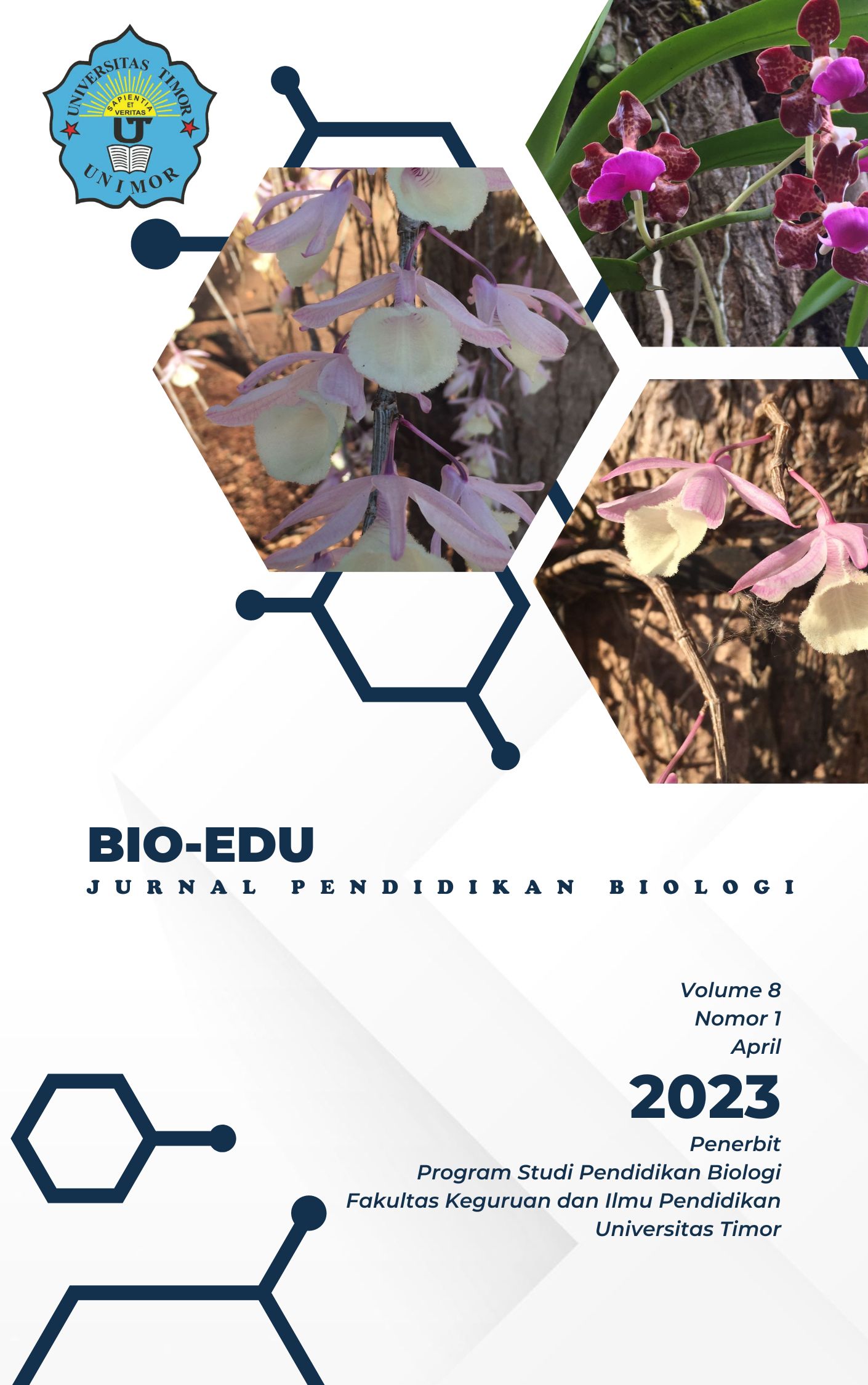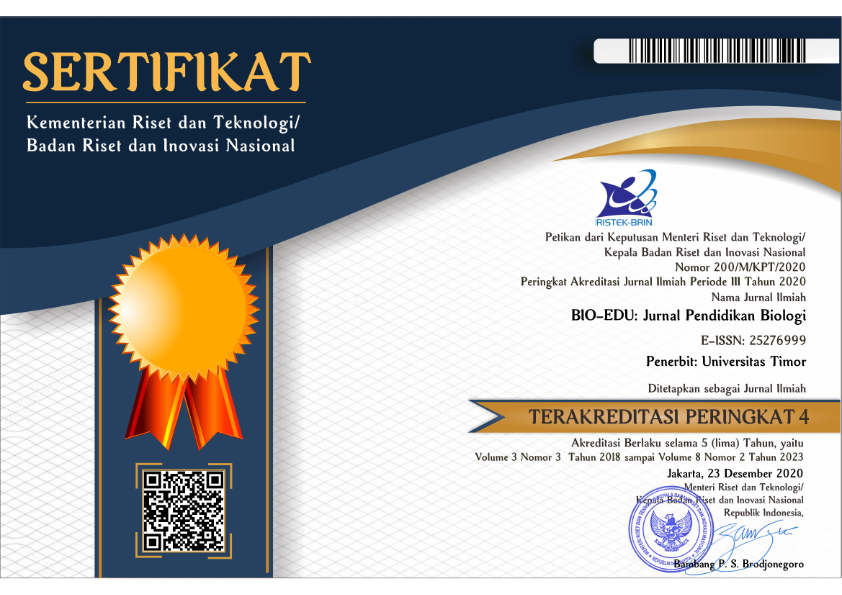KEANEKARAGAMAN SERANGGA HAMA DAN SERANGANNYA PADA TUMBUHAN SUKU MYRTACEAE
DOI:
https://doi.org/10.32938/jbe.v8i1.4427Keywords:
Diversity, Attack, Pest, MyrtaceaeAbstract
Myrtaceae tribe plants belong to a large group and are often found in various regions in Indonesia. This study aims to determine the diversity of insect pests and their attacks on plants belonging to the Myrtaceae family. The research was conducted by means of literature studies from various reputable articles. The results of the study found that among the types of pests, among others, Liriomyza spp, Sylepta spp, Acroceros syngramma, Cricula trifenestrata H., Liriomyza trifolii, Anselmella kerrichi, Hexamithodera semivelutina, Hyposidra talaca, Bactrocera sp., Bactrocera albistrigata, Bactrocera carambolae, Microtermes sp., Disosteira sp., Valanga nigricornis, Acherontia lachesis, dan Cosmoleptrus sp. Tumbuhan yang terserang hama antara lain Syzygium samarangense, Syzygium parameswaranii, Syzygium aromaticum, Syzygium luzonense, Syzygium aqueum, Psidium guajava, dan Melaleuca cajuputi. Pest attack causes leaf curl, spots on leaf surface, damage to leaf anatomy, hollow leaves, jagged leaf edges, holes in stem bark, wilted roots and roting fruit. The conclusion of this study is the diversity of insect pests that attack the Myrtaceae tribe, there are 16 types of insects.
Downloads
Published
Issue
Section
License
The Authors submitting a manuscript do so on the understanding that if accepted for publication, the copyright of the article shall be assigned to BIO-EDU: Jurnal Pendidikan Biologi and Departement of Biology Education, Universitas Timor as the publisher of the journal. Copyright encompasses rights to reproduce and deliver the article in all form and media, including reprints, photographs, microfilms, and any other similar reproductions, as well as translations.
BIO-EDU journal and Departement Biology Education, Universitas Timor, and the Editors make every effort to ensure that no wrong or misleading data, opinions, or statements be published in the journal. In any way, the contents of the articles and advertisements published in BIO-EDU are the sole and responsibility of their respective authors and advertisers.
Users of this website will be licensed to use materials from this website following the Creative Commons Attribution-ShareAlike 4.0 International License.



















